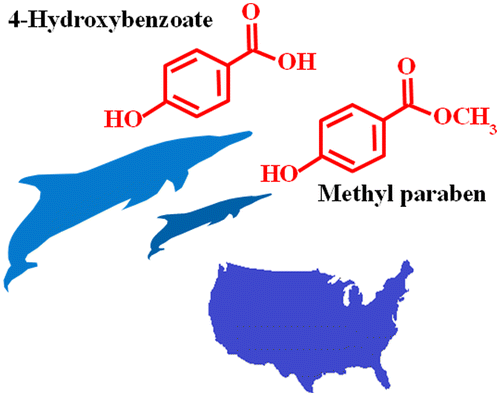The common cosmetic and drug preservatives known as parabens are in thousands of products—and, at low levels, in the vast majority of Americans. Recent studies have raised concerns that the compounds might have unwanted health effects. Now scientists report for the first time that the antimicrobials are also showing up in the tissues of marine mammals, including dolphins, sea otters and polar bears. Their results appear in ACS' journal Environmental Science & Technology.
Manufacturers have been adding parabens to some lotions, makeup, foods and pharmaceuticals since the 1950s. They prevent bacterial growth and extend products' shelf-lives. But research has shown that parabens and their byproducts can act like estrogen in animals. Although the potential effects on humans aren't clear, an analysis by the Centers for Disease Control and Prevention found that most people whom they tested had detectable levels of parabens in their urine. And humans aren't the only ones getting exposed. As products containing these preservatives wash into the sewage system, they can be released into the environment. Kurunthachalam Kannan and colleagues wanted to find out whether marine animals were accumulating parabens in their bodies, too.
The researchers analyzed 121 tissue samples from eight species of marine mammals from the coastal waters of Florida, California, Washington and Alaska. They detected methyl paraben in many of the samples. A metabolite of methyl paraben called 4-hydroxybenzoic acid (4-HB) was in every sample. The levels ranged from trace amounts of methyl paraben in polar bears to tens of thousands of nanograms of 4-HB per gram of tissue in some dolphins and sea otters. The metabolite also occurs naturally in plants, but the scientists say the positive correlation between methyl paraben and 4-HB in samples suggests they come from synthetic sources. They add that further research is needed to determine what potential health risks these substances might pose to marine animals.
More information: Jingchuan Xue et al. Elevated Accumulation of Parabens and their Metabolites in Marine Mammals from the United States Coastal Waters, Environmental Science & Technology (2015). DOI: 10.1021/acs.est.5b03601
Abstract
The widespread exposure of humans to parabens present in personal care products is well-known. Nevertheless, little is known about the accumulation of parabens in marine organisms. In this study, six parabens and four common metabolites of parabens were measured in 121 tissue samples from eight species of marine mammals collected along the coastal waters of Florida, California, Washington, and Alaska. Methyl paraben (MeP) was the predominant compound found in the majority of the marine mammal tissues analyzed, and the highest concentration found was 865 ng/g (wet weight [wet wt]) in the livers of bottlenose dolphins from Sarasota Bay, FL. 4-Hydroxybenzoic acid (4-HB) was the predominant paraben metabolite found in all tissue samples. The measured concentrations of 4-HB were on the order of hundreds to thousands of ng/g tissue, and these values are some of the highest ever reported in the literature. MeP and 4-HB concentrations showed a significant positive correlation (p < 0.05), which suggested a common source of exposure to these compounds in marine mammals. Trace concentrations of MeP and 4-HB were found in the livers of polar bears from the Chuckchi Sea and Beaufort Sea, which suggested widespread distribution of MeP and 4-HB in the oceanic environment.
Journal information: Environmental Science & Technology
Provided by American Chemical Society





















